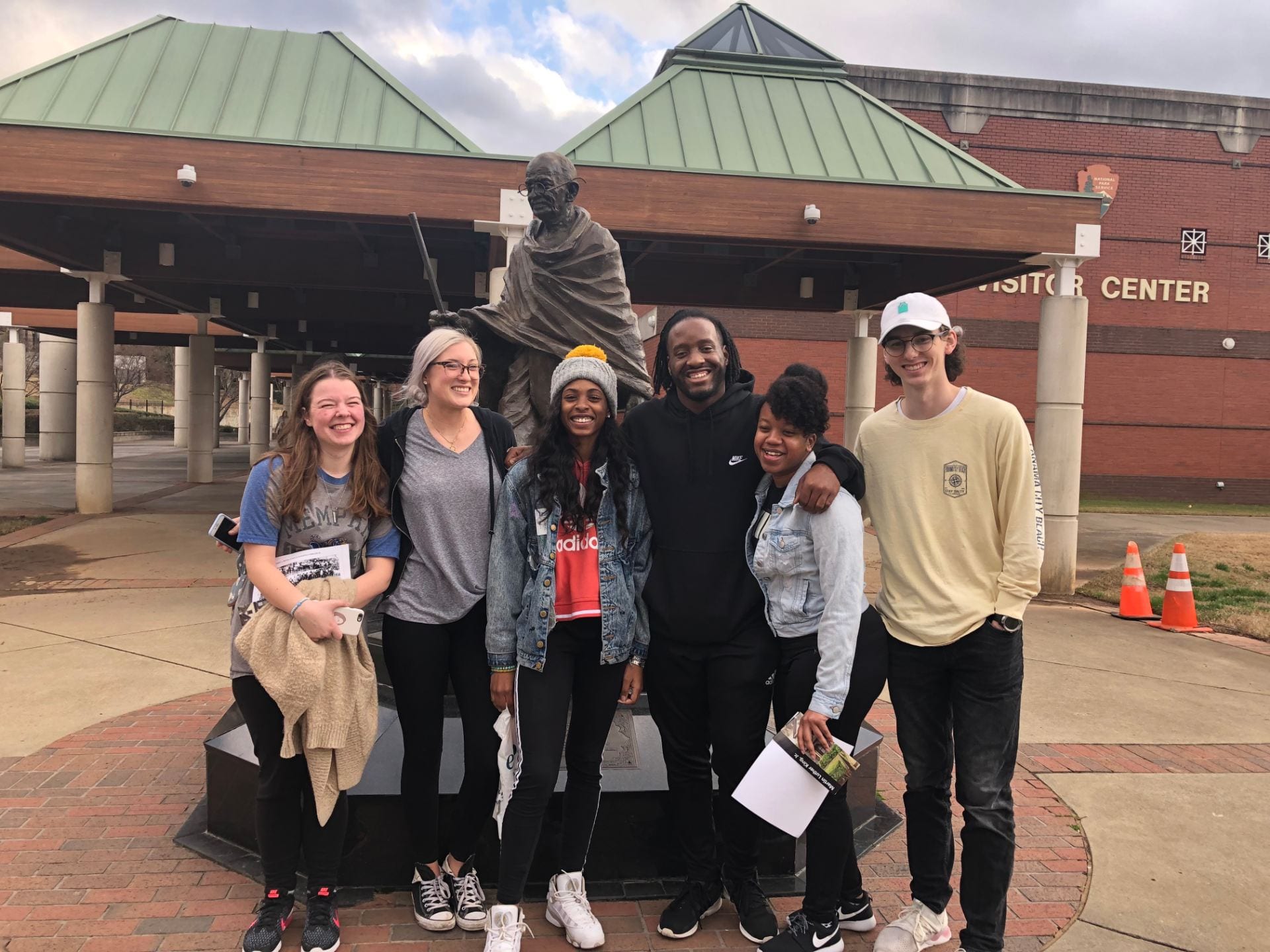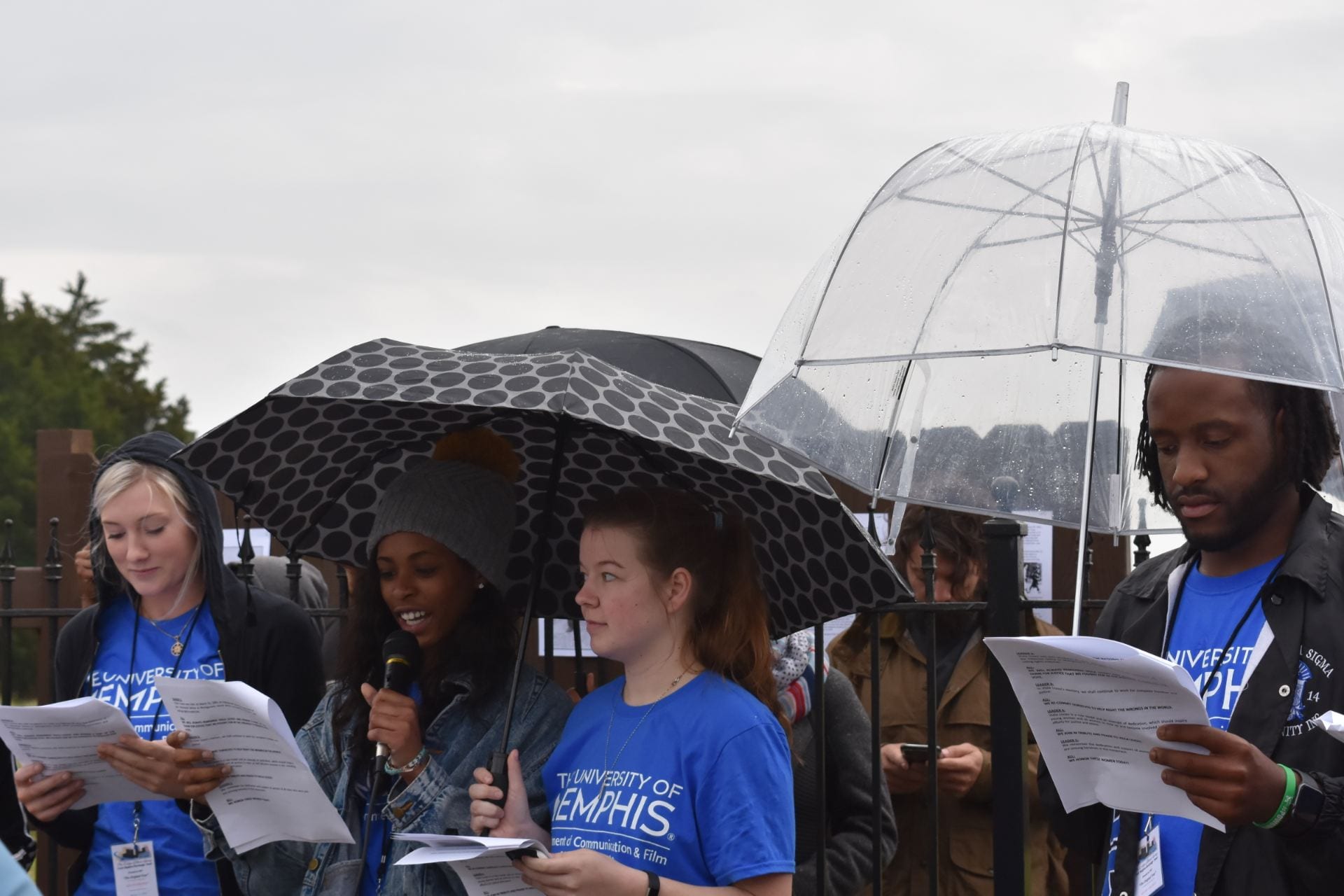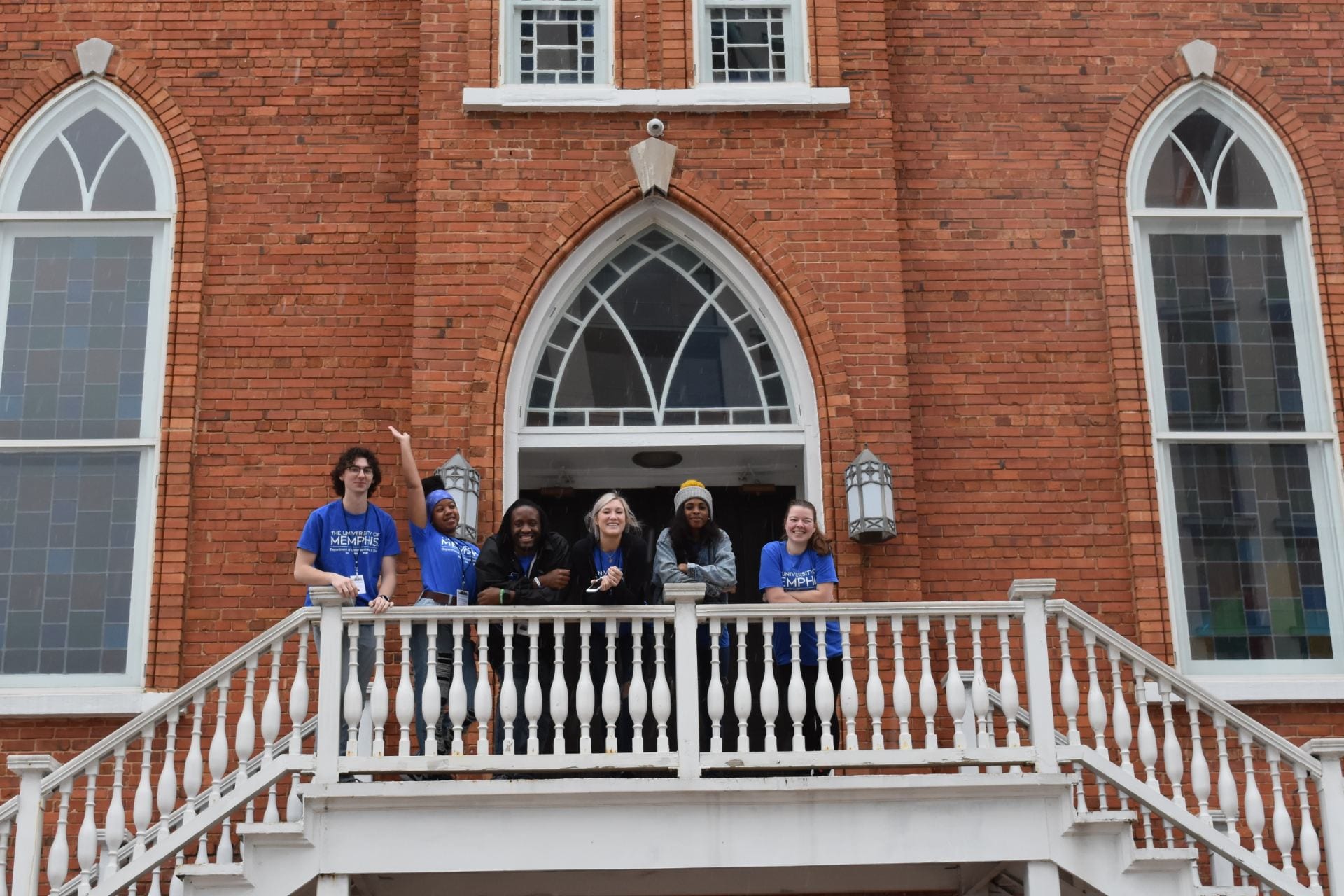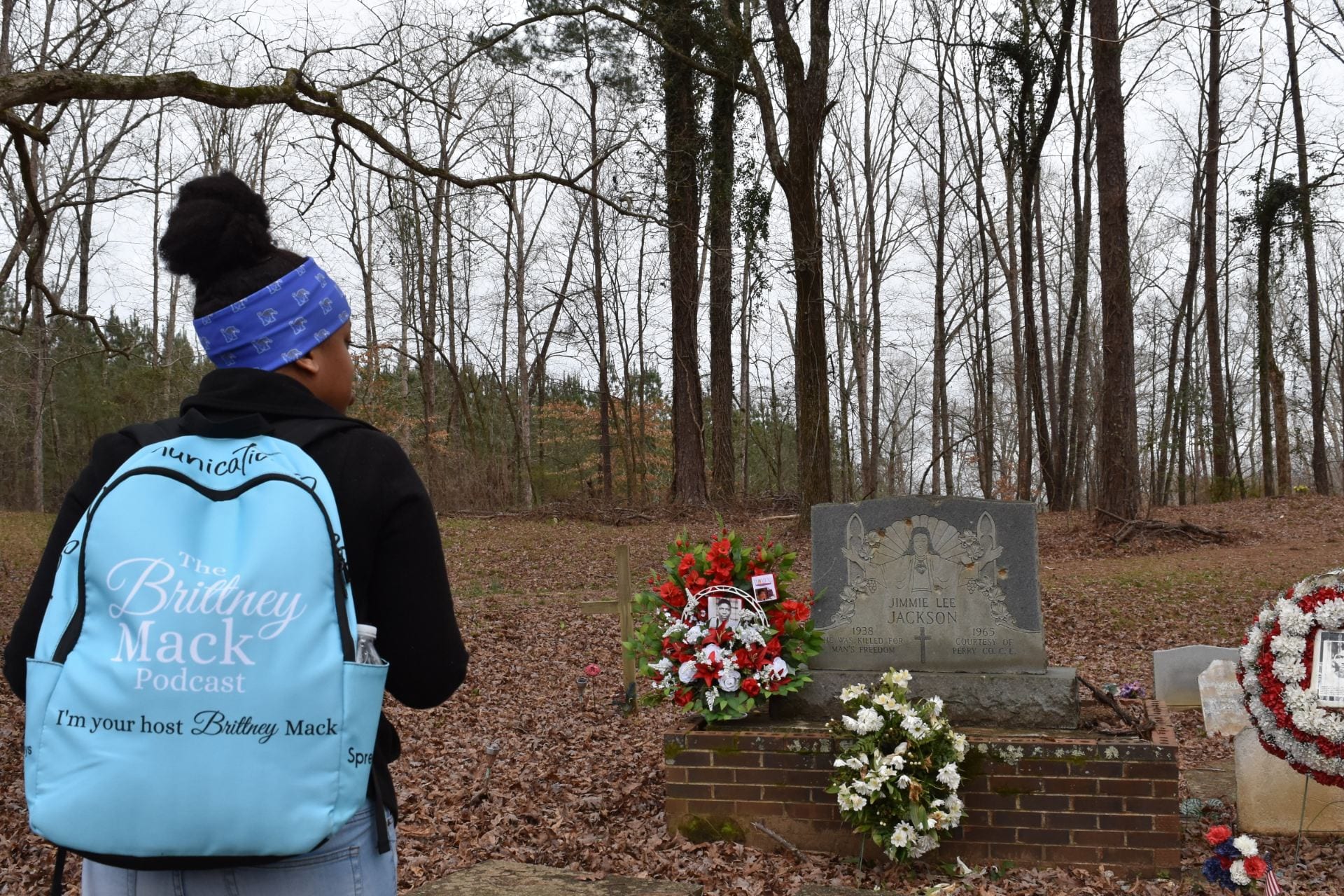In her classes in the University of Memphis’ Department of Communication & Film, assistant professor Christina Moss often discusses the “power of place” with students. For educators, opportunities to take students to locations that affect people’s memories are both invaluable and rare.

“I’ve always been a firm believer that when you get (students) outside of the classroom, things get real real fast,” Moss said.
That sentiment was vivid this spring when Moss took six UofM students from her “Public Memory, Rhetoric and Civil Rights” class on a tour of landmark sites from the American civil rights movement. Moss and her students — Kori Johnson, Allison Hutchison, Nathan Spencer, Rachel Guffin, Brittney Mack and Isaiah Perry — traveled to Atlanta and three locations in Alabama: Birmingham, Montgomery and Selma.
The course’s purpose is to analyze and critique the rhetorical commemoration of the civil rights movement in America. The purpose of the trip through Alabama and Georgia is to allow students first-hand views of what they’re studying in Moss’ classroom.
It’s all about getting students to the right place.
“We talk about the power of place and how a place has a feel and an emotional effect that you don’t necessarily get from descriptions,” Moss said, “so going to those places when you study these things is important … The students now have some really fundamental and influential experiences.”
Over spring break, Moss’ students:
- Met civil rights activists and representatives from the Southern Christian Leadership Conference in Montgomery.
- Learned from people who had been in Montgomery and Selma during key civil-rights protests of the era.
- Visited a church near Marion, Alabama, where Corretta Scott King, widow of Martin Luther King Jr., grew up.
- Visited the monument to Viola Liuzzo, the white civil-rights activist killed by the Ku Klux Klan in 1965 in Selma. While there, Moss said, they heard from Liuzzo’s two surviving children, who discussed the night they learned their mother had been killed. “It was those type of narrations that they got to hear that made all the difference,” she said.
- And saw the grave of Jimmy Lee Jackson, the African American whose death in 1965 sparked the Selma-to-Montgomery civil-rights marches.
“There were so many powerful insights that I gained from the trip,” said Johnson, one of Moss’ students. “The history runs so deep, and to have had the opportunity to talk to and learn from people who had first hand experiences in the civil rights movement was nothing short of amazing. We were given exclusive information that we had never read in textbooks and toured pertinent places that were key elements of the civil rights movement.”
Moss, who previously taught at the UofM’s Lambuth Campus, is writing a book on the public commemoration of the civil rights movement in Selma, which she has researched for several years. She also hopes to again teach this class on public memory and civil rights.
“I know the department has an interest in teaching classes that have some outside-the-classroom element to them to get students engaged,” Moss said.
— Phillip Tutor, CCFA media coordinator, potutor@memphis.edu







Be First to Comment